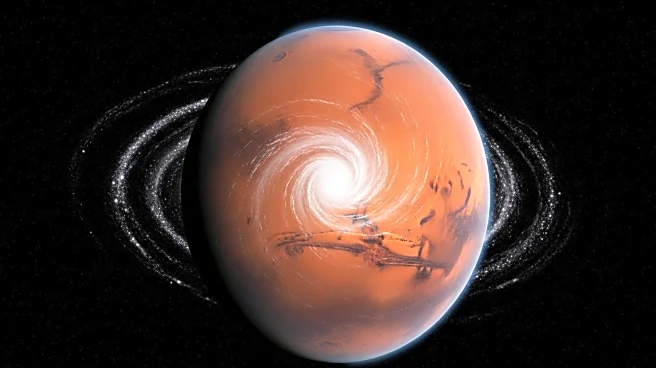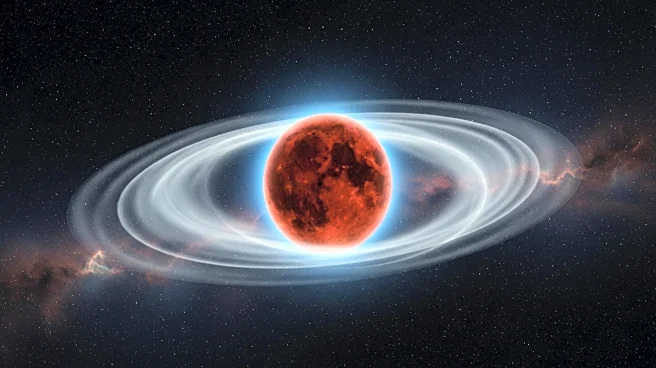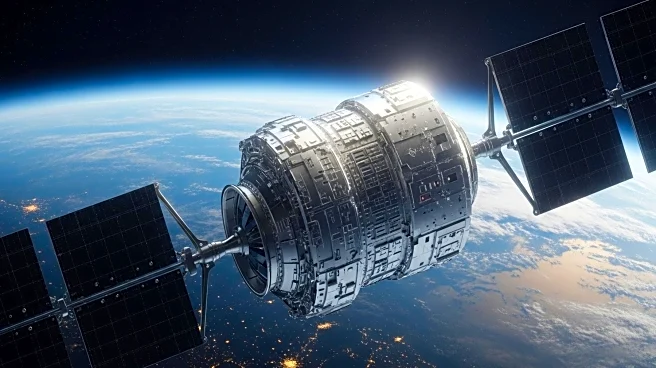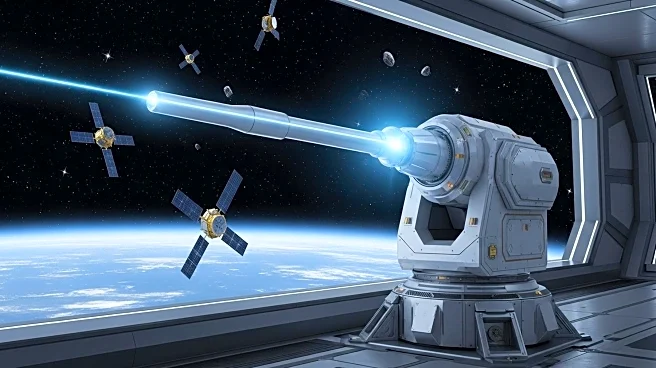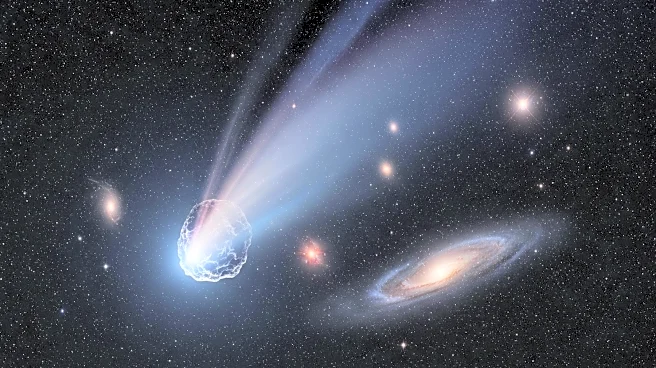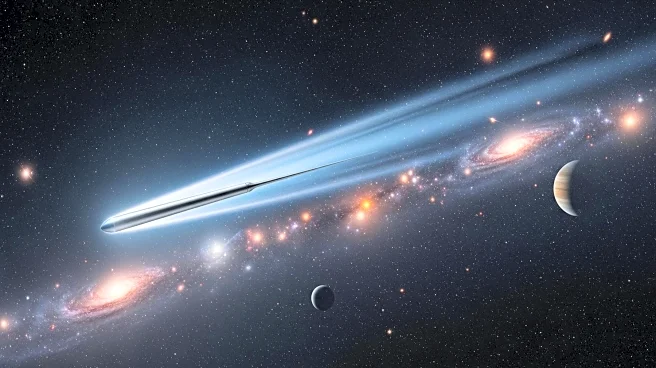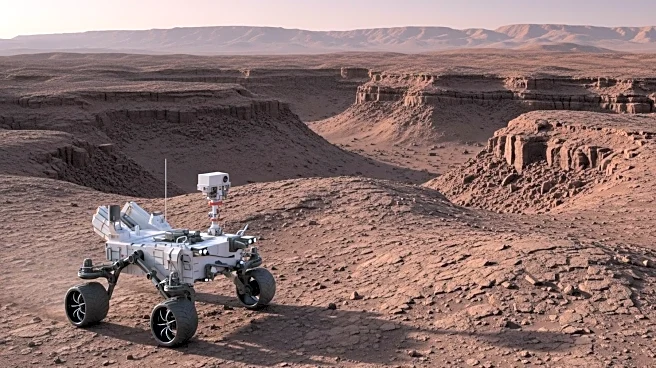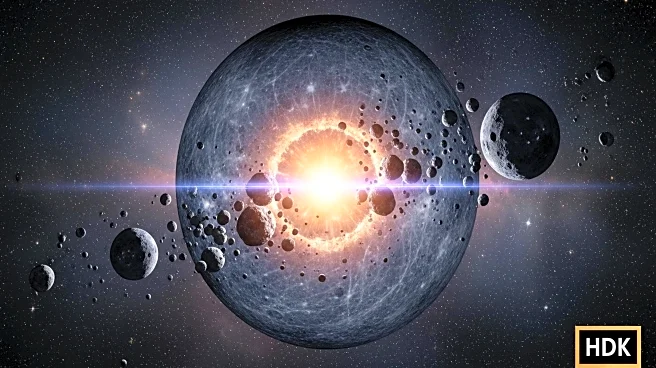What's Happening?
The European Space Agency's ExoMars Trace Gas Orbiter has provided new insights into Mars' atmosphere through detailed images captured by the Color and Stereo Surface Imaging System (CaSSIS). The images reveal the delicate layers of dust and gas in Mars' atmosphere, likened to a 'mille-feuille' pastry. Mars' atmosphere, primarily composed of carbon dioxide, is thin yet dynamic, capable of generating dust storms that influence weather patterns. The images offer a more comprehensive view of the atmospheric composition, aiding scientists in understanding how sunlight absorption and scattering affect atmospheric heating and cooling.
Why It's Important?
These new images enhance scientific understanding of Mars' atmospheric dynamics, crucial for future missions and potential human settlement on the planet. By mapping the vertical arrangement of atmospheric layers, researchers can better predict weather patterns and atmospheric changes over time. This knowledge is vital for planning long-term missions and ensuring the safety and sustainability of human activities on Mars. The findings contribute to the broader field of planetary science, offering insights into atmospheric processes that may be applicable to other celestial bodies.

